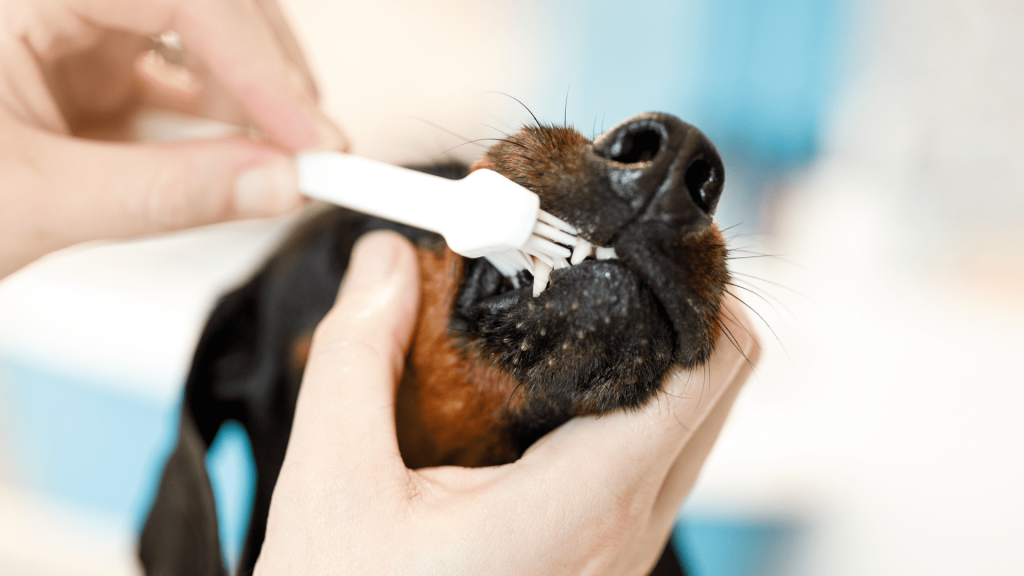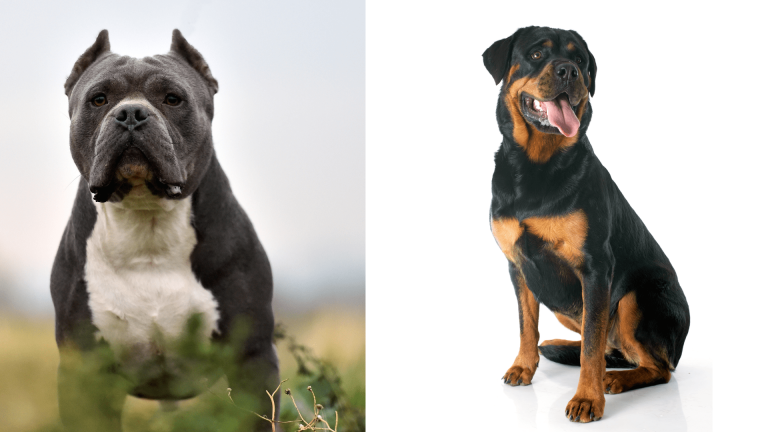How Many Teeth Do Dogs Have? 4 Types Of Teeth
Discover the fascinating world of canine dental health as we explore the question: How Many Teeth Do Dogs Have? Get insights into the number, types, and care of your furry friend’s teeth in this comprehensive article.
While most dogs probably have more teeth to bite than bark, they nonetheless have a lot of teeth! A dog’s total number of teeth should be 42, remaining at that number throughout its adult life.
Our dogs have much more teeth than we have, even though they are often smaller. Only 32 teeth allottee to humans, and even then, only if your wisdom teeth are all present.
Types Of Teeth (How Many Teeth Do Dogs Have?)

1. Incisors
The front teeth are the incisors. These teeth, among the tiniest, are used for nipping and biting, scraping meat from bones, and grooming. Most mature dogs have 12 incisors, six on top and six below.
2. Canines
The long, pointed teeth, known as canines, are next to the incisors. Dogs use these teeth to rip and shred meat. Moreover, they bite and lock onto objects your dog tries to grasp, such as a bone or a chew toy. There are two top canines and two bottom canines that are permanent.
3. Premolars
The premolars erupt after the canines. Sharp teeth like this utilize for cutting and chewing food. Your dog is probably using premolars if you see them chewing on the side of your mouth. In the jaws of most adult dogs, there are 16 premolars—eight on each side.
4. Molars
The back of the mouth is where the molars are. Their sturdy, flat teeth ground and devour heartier fare. Most adult dog mouths have four molars on top and six teeth on the bottom.
Wolf Teeth vs. Dog Teeth

Wolves and dogs share many characteristics. It’s incredible to note how similar and dissimilar their teeth are.28 primary and 42 secondary teeth and identical tooth types are present in dogs and wolves. Wolf teeth, however, are much longer and typically have stronger jaws.
When Will My Puppy Lose His Teeth? – How Many Teeth Do Dogs Have?

Dogs with good teeth maintain them for the whole of their life. Nonetheless, dogs are more vulnerable to tooth loss as they age. The front teeth, or incisors, are lost most of the time.
The majority of the time, diseases such as periodontitis, gingivitis, and the presence of tartar can result in tooth loss. It is a rather typical occurrence in dogs with advanced periodontal disease or in animals whose oral cavities have severely injure
Also, dogs may lose one or more teeth if damaged or have an intense collision with anything. The dog’s carer must therefore keep an eye out for even the slightest indications in the dog’s mouth and gums. Some of these signs include:
- Bad breath
- Swollen gums
- Loose teeth
- Chipped teeth
- Excessive salivation
- Bleeding gums
When an adult dog loses one or more teeth, extra care must take to avoid infection or tooth loss. The best course of action for each case will depend on the cause, so it’s crucial to consult a veterinarian clinic.
What Dental Requirements Does My Dog Need?

Owning a dog comes with responsibilities, like taking care of their teeth, which they depend on you for to stay clean and healthy. The most crucial (and least expensive) action you can take is to brush your dog’s teeth. We can provide you with the specifics on how to do it, how frequently you should do it, and the gear you’ll need to get started.
To help maintain your dog’s teeth strong and healthy, you might also think about dental chews, rawhide bones, or safer rawhide substitutes, but you’ll need to be sure you know how to use them correctly.
How Are Strong My Dog’s Teeth?

Although dog teeth are strong, they are not unbreakable. Dogs can break their teeth, much like people, if they chew on complex objects or get into an accident. Dogs, however, are significantly less likely than humans to develop cavities due to their saliva’s superior cavity-prevention abilities.
Gum disease is the main issue you must consider with your dog’s teeth. Dogs can develop gingivitis, a gum infection that, if untreated, can develop into periodontal disease. This condition is an ongoing infection of the oral bone and gums. Healthy teeth can fall out if the gums and bones are weak, and gum disease raises the risk of diabetes and heart disease.
Do dogs have milk teeth?

As dogs are diphyodonts, as we discussed in part before, they have milk teeth. Also, they start teething as puppies, just like newborns and young children do as they develop and get new teeth. Due to their sharp and acute shape, these are called “needle teeth.”
Replacing milk teeth with permanent teeth begins during the third month of a dog’s life and finishes between the sixth and seventh months. The progression of this process is as follows:
- three weeks: Teething begins in puppies.
- six weeks: Milk teeth have all come through.
- 12 weeks: The permanent teeth erupt as the baby teeth fall out.
- six months: All baby teeth have fallen out, and all permanent teeth have emerged. All permanent teeth have erupted, and all milk teeth have fallen out. After the canines and incisors erupt, premolars follow. Although you might see the baby’s teeth on the floor, the puppy will probably swallow them while eating.
Main characteristics of dog teeth

Now that you know the number of teeth dogs possess, let us go into more detail regarding the key features of a dog’s dentition. First, it’s essential to comprehend that each dog tooth consists of three parts:
- Crown: the section of the tooth that is visible.
- Root: the tooth portion that embeds in the upper or lower jaw’s alveolar bone.
- Cervical line: It indicates the meeting point of the root and the crown.
Let’s go into more depth about each component’s main characteristics and the materials used to create it now that we are aware of the parts that make up a tooth:
- Dentin, a substance layer that sits directly under the tooth’s enamel, makes up most of the crown and the root.
- Enamel, the body’s most challenging and mineralized tissue, covers the crown.
- On the other hand, cementum, a tissue that resembles bone, covers the root.
- The dental pulp, which includes odontoblasts, which produce dentin, connective tissue, nerves, blood vessels, and blood, fills the pulp cavity of each tooth.
- The cementum, the periodontal ligament, the alveolar bone, and the gingival tissue comprise the periodontium, the structure that holds and supports each tooth.
A little dog has how many teeth? (How Many Teeth Do Dogs Have?)

Adult dogs have the same number of teeth regardless of their size or breed. All dogs, whether tiny, medium, or massive, have 42 teeth.
When Do Puppies Get Their Adult Teeth?
Unlike newborns, who may begin to lose their baby teeth at age five or six, puppies often start losing their baby teeth between the ages of four and five months. Due to how quickly puppies develop, their teeth are likelier to fall out. Puppies get all of their adult teeth by the time they are seven months old.
Dogs have how many sets of teeth?
Dogs have both deciduous and adult teeth, just like people do. A dog’s entire set of baby teeth fully develops in just eight to ten weeks after birth. Their deciduous teeth will appear in your home or your pet’s food after four to five months when they fall out to make place for their adult set of teeth. The adult tooth will grow as soon as the baby tooth is lost.
Puppy Teething Timeline: When Do Puppies Get Teeth [Video]
Final Notes
For your dog’s health, it is crucial to understand how many teeth they have and how to take care of them. Plaque buildup and halitosis in dogs can reduce by providing them with a new chew toy and brushing their teeth daily. Consider taking your pet to the vet if you have concerns about the condition of their teeth so that they can receive the necessary care.
Dutch telemedicine for animals fills this gap. With Dutch, you may communicate with a qualified veterinarian from the convenience of your home and receive the assistance required for your pet’s health. For quick and easy veterinarian care, get in touch with Dutch right away.
Bottom-up
So, I hope you got the full idea on How Many Teeth Do Dogs Have? 4 Types Of Teeth.
Please comment below about your ideas and share this “ How Many Teeth Do Dogs Have? 4 Types Of Teeth ” article with your friends.
Stay tuned with our website to find out more exciting stuff. Don’t forget to check out our previous articles too.
Until You Can Read: 20 Fun facts about dogs
You Can Read: 35+ Best Pirate Tattoo Designs




